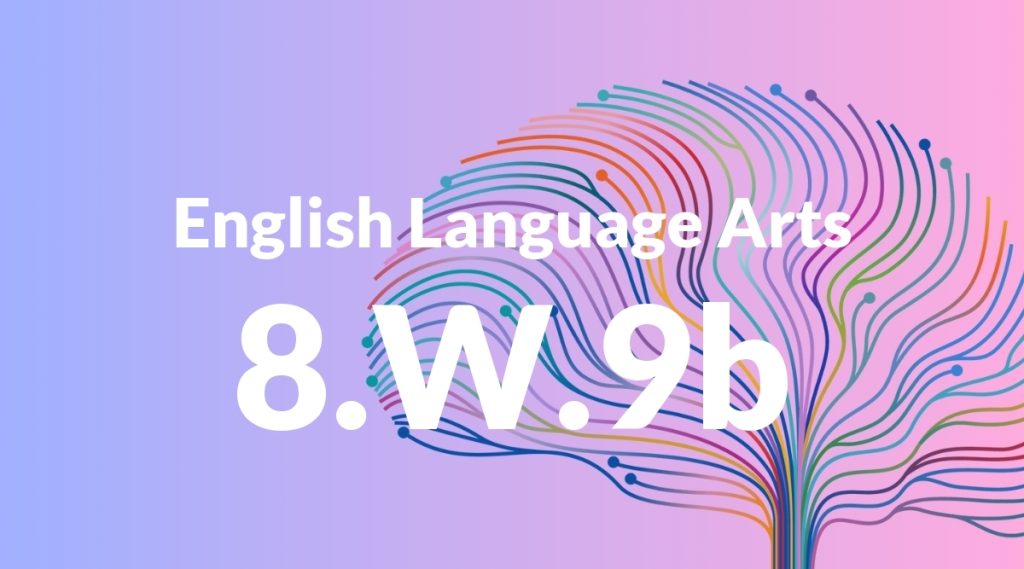Standard: 8.W.9b – Apply grade 8 Reading standards to literary nonfiction (e.g., ‘Delineate and evaluate the argument and specific claims in a text, assessing whether the reasoning is sound and the evidence is relevant and sufficient; recognize when irrelevant evidence is introduced’).
Grade level: Grade 8
Subject: English Language Arts
Domain: Writing
Teacher Overview
This standard focuses on developing students’ ability to critically analyze arguments and claims in literary nonfiction. It is crucial for helping students become discerning readers who can evaluate the validity and relevance of information, a skill that is essential for academic success and informed citizenship. Students should be comfortable identifying main ideas and supporting details, and distinguishing between fact and opinion. These skills are necessary to effectively evaluate arguments and evidence in nonfiction texts.
Mastering this standard will enable students to critically engage with complex texts, evaluate arguments across various media, and construct well-supported arguments in their own writing.
Common Misconception 1
A common misconception is that all evidence presented in a text is relevant. This is incorrect because authors may include extraneous information that does not directly support their main argument.
Intervention 1
Use graphic organizers to help students map out the main argument and supporting evidence, highlighting any irrelevant information. This visual aid can clarify the relationship between evidence and the main argument.
Common Misconception 2
Another misconception is that the presence of evidence automatically makes an argument sound. This is incorrect because not all evidence is of equal quality or relevance.
Intervention 2
Conduct exercises where students evaluate the quality and sufficiency of evidence by examining its source, context, and logical connection to the argument. Discussions and peer reviews can reinforce these skills.
Prerequisite Knowledge
Students should have a foundational understanding of identifying main ideas and supporting details in a text, as well as basic skills in distinguishing between fact and opinion.
Subsequent Knowledge
After mastering this standard, students will be able to apply critical thinking skills to more complex texts, including evaluating the effectiveness of arguments in diverse media and writing their own persuasive texts.
Instructional Activities
- Debate sessions on current events
- Peer review of persuasive essays
- Group analysis of political speeches
- Writing critiques of documentaries
- Creating annotated bibliographies for research projects




